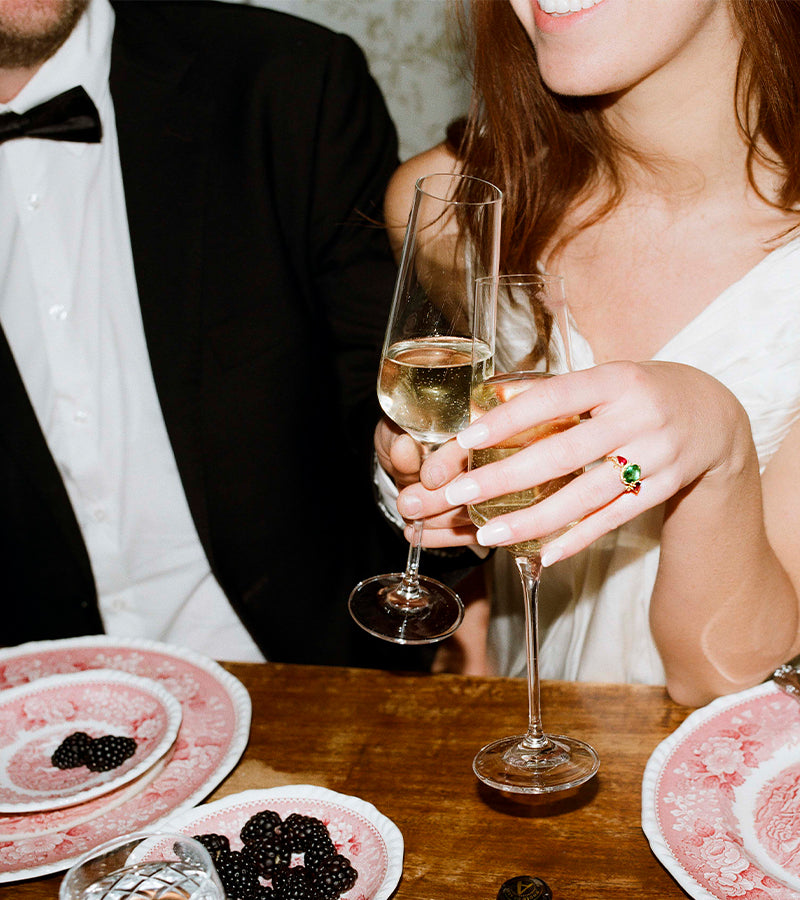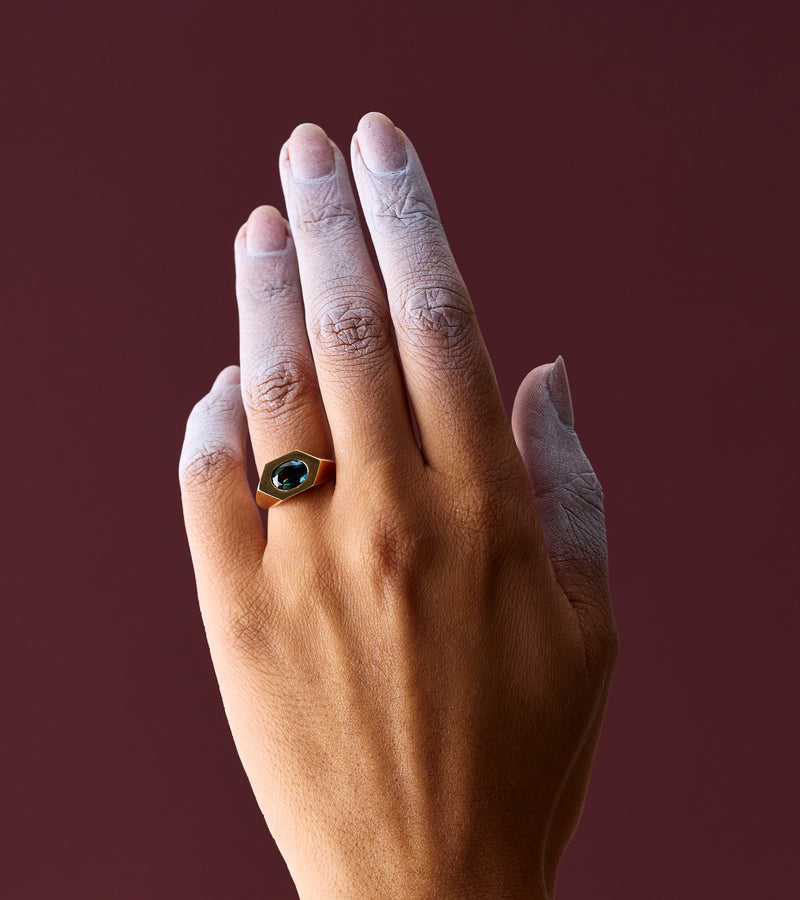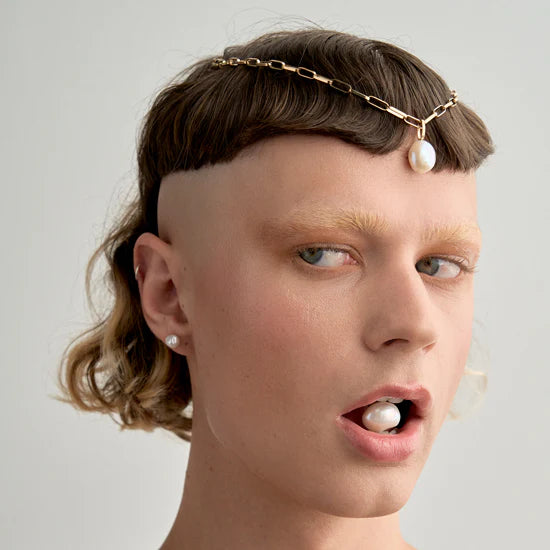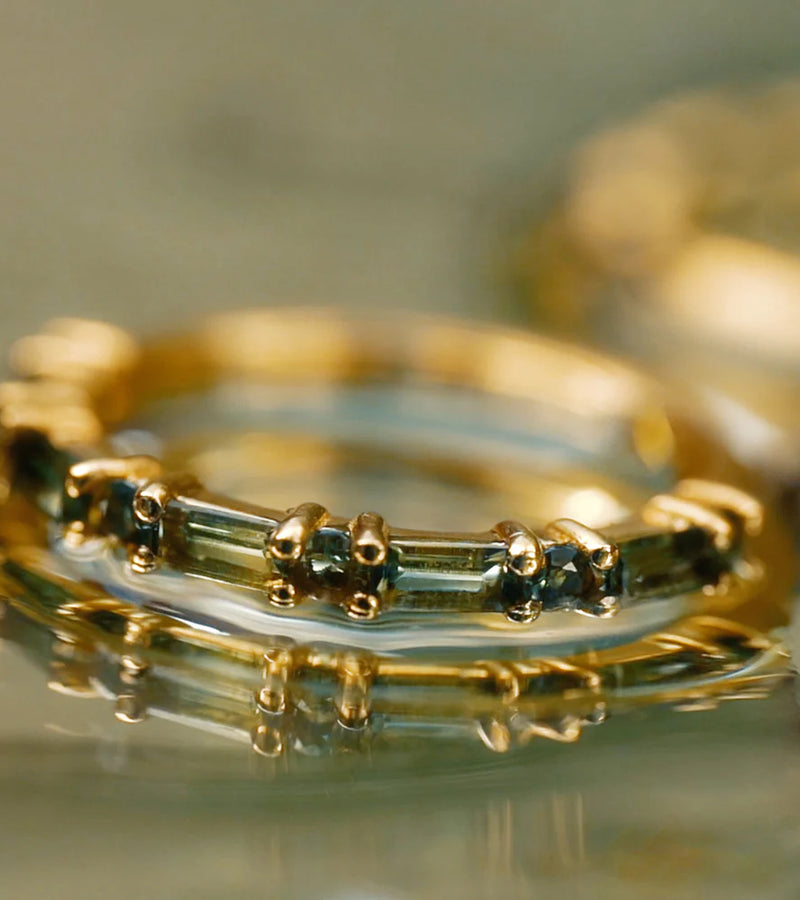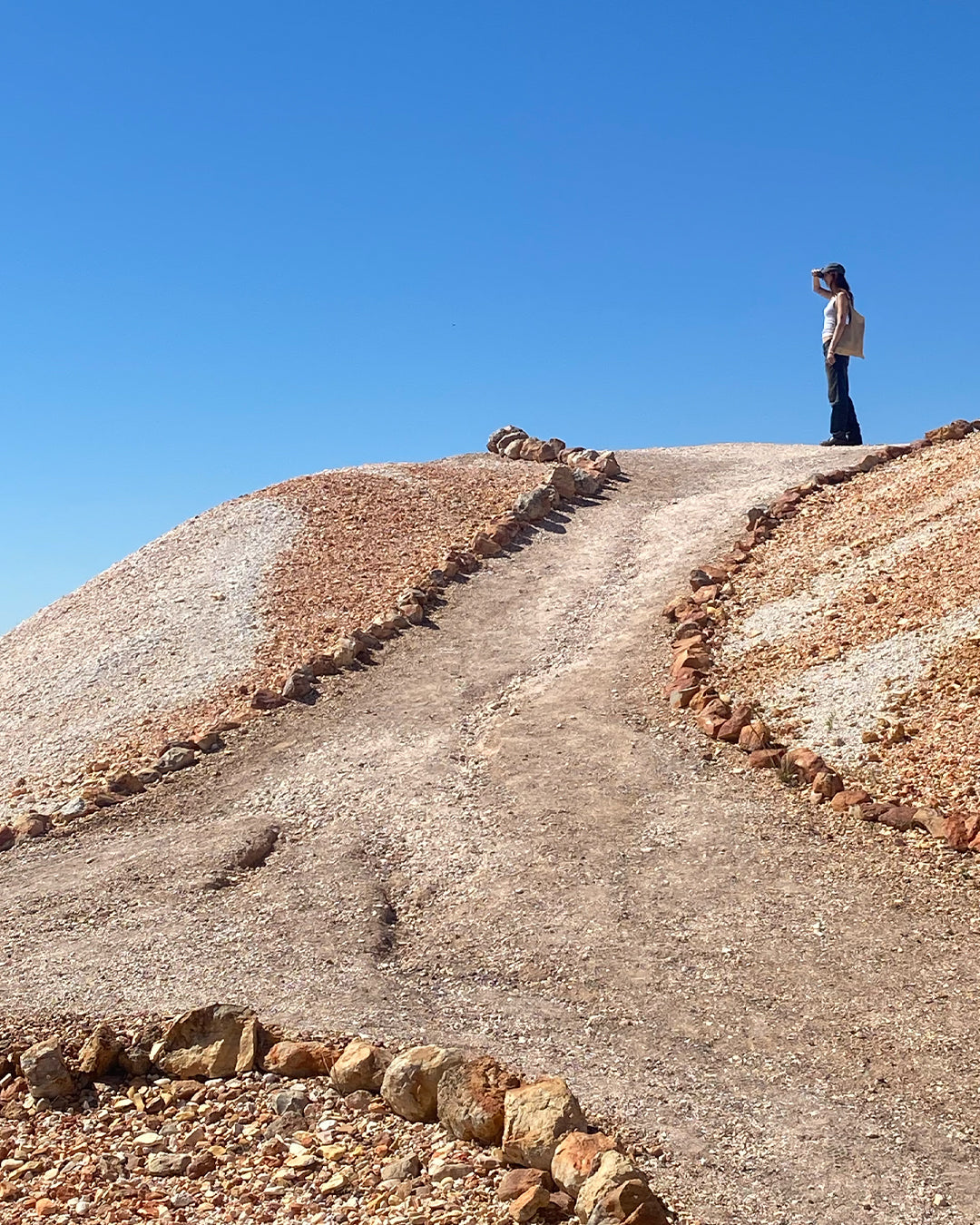 Represented jeweller and sculptor Tilda Cole recently journeyed from Melbourne to the iconic opal-mining town of Coober Pedy, an experience that reshaped her creative landscape.
Represented jeweller and sculptor Tilda Cole recently journeyed from Melbourne to the iconic opal-mining town of Coober Pedy, an experience that reshaped her creative landscape.
In this interview, she reflects on the raw beauty of the Australian outback, the surreal textures of salt flats and dugouts, and the quiet revelations found on long, open roads. From enduring geological forms to moments of unexpected inspiration, her travels offer a poetic glimpse into how place can inform practice.

PO8: How did the unique geological formations and vast open spaces between Melbourne and Coober Pedy influence you? Were there any particular geological features that resonated with your artistic sensibilities?
TC: Traveling from Melbourne to Coober Pedy, I was struck by the sheer contrast between the busy, fast moving, urban landscape and the vast openness of the outback. Early into the trip I was amazed by our Australian salt flats, reminding me of my time in Bolivia. The textures and transitions of the earth have always had a strong influence in my work. The unique geological formations, like the layered ochres of the Breakaways, or the flat, seemingly infinite salt pans—evoked a sense of enduring solidity that goes beyond time.

PO8: Beyond the opals themselves, what other "materialities" or textures did you encounter that captured your attention? Were there specific rocks, sands, or even man-made structures that spoke to your artistic curiosity?
TC: I found Coober Pedy rich with inspiration. Coming from a sculptural background, I was particularly drawn to the dugouts we explored, and how the town’s form is so deeply shaped by its natural surroundings. Rather than imposing control over the landscape, the local community seems to embrace it, allowing the geology itself to influence design decisions. This approach resonated with me, reminding me of my relationship with lost-wax casting, where I welcome the unexpected and celebrate imperfection as part of the creative process.

PO8: Your bio speaks of "enigmatic allure" and "surrealist forms" as driving forces in your creations. How did the stark, almost lunar landscape of the outback, particularly around Coober Pedy, evoke or challenge your existing understanding of surrealism? Did you encounter any scenes or phenomena that felt distinctly surreal?
TC: The landscape around Coober Pedy felt like a living, breathing manifestation of the dreamlike—vast, raw, and almost otherworldly. As an artist, I’m drawn to moments where form and material collide in unexpected ways, and the starkness of the outback offered an abundance of such moments. It’s no surprise that Coober Pedy has served as the backdrop for so many post-apocalyptic and dystopian films; there’s a palpable sense of stepping off the Earth, into the unknown, as if the landscape itself exists in a world apart.

PO8: The journey from Melbourne to Coober Pedy is significant in distance and landscape shift. Did this physical journey parallel any internal or artistic journeys for you? Were there moments of quiet contemplation on the road that led to new ideas or shifts in perspective?
TC: More than anything, this journey served as a reminder of my core influences as an artist and offered a much-needed moment of reconnection. In the fast-paced rhythm of daily life, it's easy to become tethered to the workbench and lose sight of the world beyond the studio. The long, quiet stretches of road between Melbourne and Coober Pedy created space for reflection—a sense of returning home, both to familiar inspirations and to emerging ideas. It was during these moments of stillness that I felt the stirrings of a new direction, one I’m eager to explore in an upcoming series of works.
An exclusive collection of Tilda Cole's distinctive jewellery is available at Pieces of Eight Gallery. We invite you to explore her sculptural forms and thoughtful craftsmanship in person or online.
Read more

As July draws to a close, we celebrate the enduring beauty and passion of its birthstone, the ruby. Famed for its deep crimson hues and rich symbolism, rubies have long been associated with love, v...

We're pleased to announce the arrival of a new suite of works from Melbourne based artist and long-time Pieces of Eight favourite, Seb Brown. Known for his distinctly expressive approach to jewelle...


